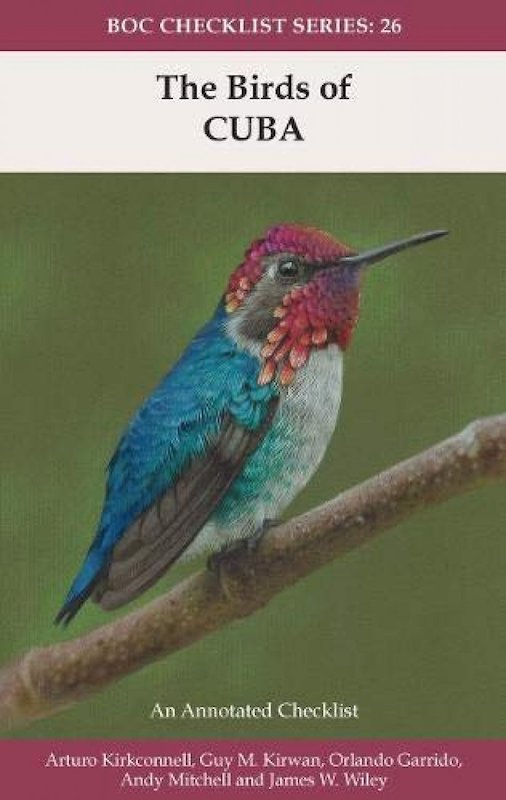| The Birds of Cuba – An Annotated Checklist | By Arturo Kirkconnell, Guy M Kirwan, Orlando H Garrido, Andy Mitchell & James W Wiley | British Ornithologists’ Club | 2020 | Paperback | 472 pages | 32 plates with colour photos | ISBN: 9780952288671 | £44.99p |

Publisher’s View:
Cuba has the richest avifauna of all the West Indian islands, boasting 28 extant endemics and many more Greater Antillean specialities. One, the spectacular Cuban Macaw, is long extinct, whilst the endemic subspecies of Ivory-billed Woodpecker and the wintering Bachman’s Warbler are almost certainly also gone. But most of Cuba’s special birds still exist, including the iconic Zapata Rail and the world’s smallest bird, the Bee Hummingbird.
This new checklist to the birds of Cuba is the most comprehensive ever attempted. Meticulously researched and fully referenced, it is the product of decades of fieldwork and research by the authors. It summarises our current knowledge of the status and distribution of birds in this fascinating country, and provides an accurate baseline account of the Cuban avifauna for future generations.
An extensive introduction includes chapters on the history of ornithology in Cuba, geology and geography, vegetation and habitats, zoogeography, migration, breeding, and conservation. The systematic list covers all 385 species that are confirmed to have occurred in Cuba, with another 26 species treated as unconfirmed. Completed by two appendices, a gazetteer, and a comprehensive list of references, there is also a 32-page colour section containing maps and photographs of some of the country’s special habitats and many of its endemic birds.
This definitive work will be an essential reference for all those with an interest in the unique birdlife of Cuba and the Caribbean region in general.
Fatbirder View:
This does what it says on the tin broadly giving the status of all birds that have been recorded on the island with notes on distribution, breeding, taxonomy et al. I’d recommend that any visiting birder read the opening chapters which give a great introduction to Cuba from an ornithological perspective.
As a bench mark reference such works are essential to science but unlikely to impact the market much, but are not, I feel, for the casual birder. Serious birders will want to know the best places to see the rarer endemics and would enhance their chances by fully comprehending the meticulously researched material.
It happens I was shown the birds of Cuba by one of the authors; Guy Kirwan, so know his knowledge to be first class. During my visit we also met up with a number of ornithologists undertaking studies there as Cuba has a history of great ornithology and ornithologists.
Fatbirder
